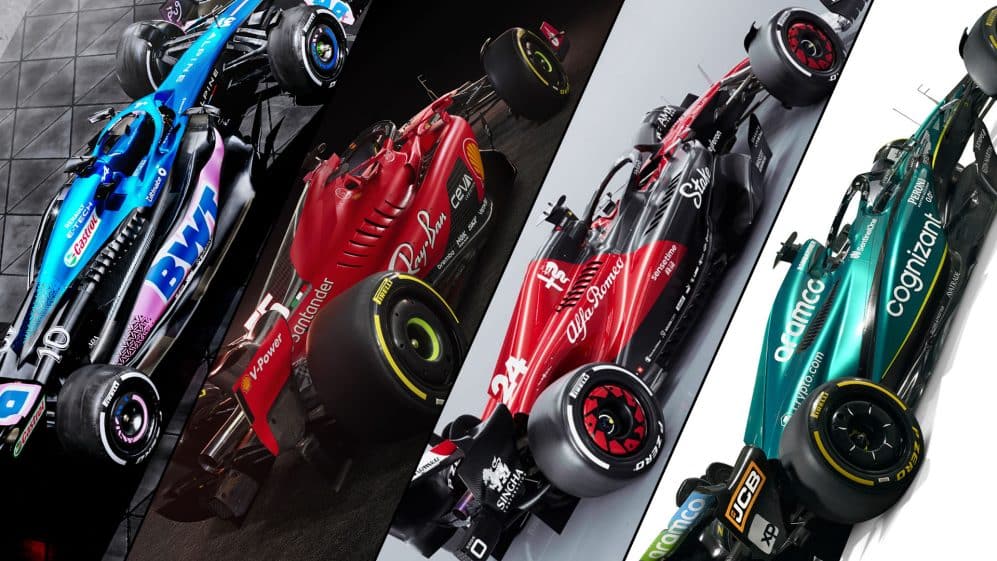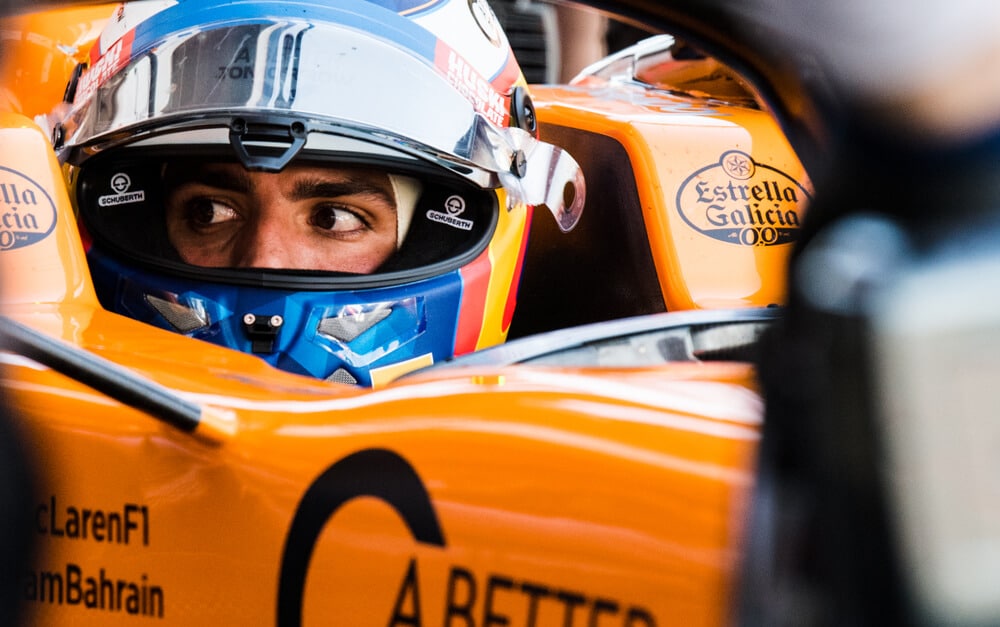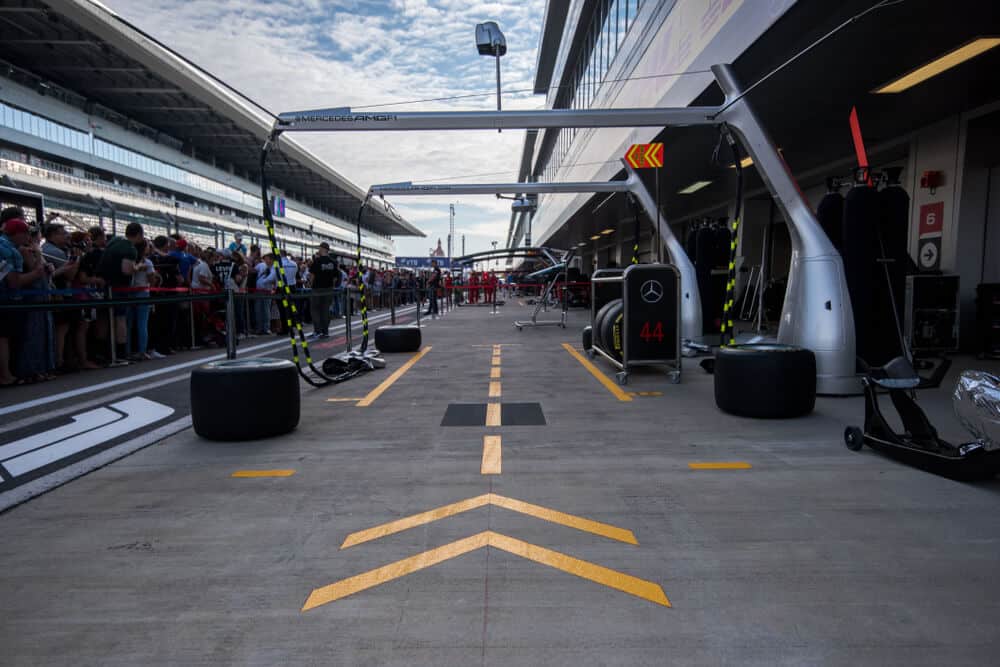Formula 1 is a high-speed, highly competitive motorsport that requires precise logistics to ensure that the cars and equipment arrive at each race in peak condition.
Transporting F1 cars between races is no small feat. Teams often having to move thousands of kilograms of equipment, including multiple cars, spare parts, and other essential items, from one location to another in a matter of days. The process requires meticulous planning and coordination, with teams relying on air, road, and sea transport to ensure that everything arrives on time.
Whether it’s a short hop between races in Europe or a long-haul journey to a far-flung corner of the world, the process of transporting F1 cars is a critical part of the sport. It requires the expertise of experienced logistics professionals to pull that off.
Table of Contents
Watch this video to learn more about the logistics in F1.
Air Transportation for Formula 1 Cars
Air transportation is a popular choice for Formula 1 teams looking to transport their cars and equipment between races. It offers a number of advantages over other forms of transport.
The advantages of using air transportation for F1 cars
- Speed: Air transportation is the fastest way to move F1 cars and equipment from one location to another, allowing teams to minimize downtime between races.
- Control: Teams have greater control over the conditions in which their cars and equipment are transported, reducing the risk of damage or breakage during transit.
- Flexibility: Air transportation offers more flexibility than other forms of transport, allowing teams to make last-minute changes to their schedules if necessary.
Costs and logistics involved in transporting F1 cars by air
Transporting F1 cars by air can be a complex and costly process. It requires teams to secure cargo space on planes and properly package their cars and equipment to ensure they arrive safely at their destination.
Teams must also coordinate the logistics of air transportation, including arranging pick-up and delivery times. They also need to ensure that their cars and equipment are properly loaded and unloaded from planes. The costs of air transportation can add up quickly, with teams typically taking out insurance to protect their cars and equipment in the event of loss or damage during transit. Additionally, there are various handling fees associated with air transportation. It includes airport handling fees, customs fees, and security fees, which must be factored into the overall cost.
Despite the costs and logistics involved, air transportation remains a popular choice. Mainly due to its speed and reliability, making it an essential part of the sport’s logistics operations.
Safety and security measures put in place to protect F1 cars during air transportation
The safety and security of Formula 1 cars during air transportation is of utmost importance, as these cars and equipment represent a significant investment for teams. To protect their cars and equipment during transit, teams take a number of measures, including proper packaging, insurance, and security personnel. F1 cars are carefully packaged in custom crates to reduce the risk of damage during transit, and teams typically take out insurance to protect their investment in the event of loss or damage during air transportation.
Teams may also take additional security measures, such as hiring security personnel to accompany shipments, to ensure that their cars and equipment are protected at all times. These measures help to mitigate the risks associated with air transportation and ensure that Formula 1 cars arrive at their destination in the same condition they were in when they left.
Ground Transportation for Formula 1 Cars
Ground transportation, such as trucks or trailers, is another option for transporting Formula 1 cars and equipment between races.
Advantages of using ground transportation for F1 cars
- Cost: Ground transportation is typically less expensive than air transportation, making it a more cost-effective option for some teams.
- Convenience: Ground transportation can be more convenient for teams, as it does not require the same level of planning and coordination as air transportation.
- Control: Teams have greater control over the conditions in which their cars and equipment are transported, reducing the risk of damage or breakage during transit.
Costs and logistics involved in transporting F1 cars by ground
Transporting Formula 1 cars by ground, such as by truck or trailer, can be a cost-effective and convenient option for teams, especially for shorter distances. However, the costs and logistics involved in ground transportation must still be carefully managed to ensure the safe and timely delivery of cars and equipment. Teams must secure vehicles and drivers, as well as properly package their cars and equipment to protect them during road travel. Insurance is also typically taken out to protect the investment in the event of loss or damage during transit. Additionally, teams must coordinate the logistics of ground transportation, taking into account travel time and potential traffic delays.
Overall, while ground transportation has its advantages, teams must carefully consider the costs and logistics involved to ensure that their cars and equipment are delivered safely and on time.
Safety and security measures put in place to protect F1 cars during ground transportation
Ensuring the safety and security of Formula 1 cars and equipment during ground transportation is a top priority for teams. To protect their investment, teams take a number of measures, including proper packaging, insurance, and security personnel. F1 cars are packaged in custom crates or containers to minimize the risk of damage during transit.
Insurance is also taken out to protect against loss or damage during ground transportation. In addition, teams may hire security personnel to accompany shipments, or use GPS tracking devices to monitor the location of their cars and equipment at all times. These measures help to mitigate the risks associated with ground transportation and ensure that Formula 1 cars and equipment arrive at their destination in the same condition they were in when they left.
Overall, the safety and security of Formula 1 cars and equipment is a key aspect of the logistics involved in transporting them between races.

The Future of Transporting Formula 1 Cars
The logistics and transportation of Formula 1 cars and equipment are constantly evolving and adapting to new technologies and trends.
Advancements in transportation technology that could impact the way F1 cars are transported between races in the future
The integration of autonomous vehicles, for example, could greatly increase efficiency and reduce the need for human drivers. Drones could be used for transporting small or lightweight equipment, allowing for faster and more cost-effective deliveries. Renewable energy sources, such as electric or hydrogen-powered vehicles, could help to reduce the carbon footprint of F1 car transportation and make the sport more environmentally sustainable. These technological advancements have the potential to greatly improve the speed, efficiency, safety, and sustainability of transporting F1 cars and equipment between races.
Ways in which logistics and transportation for F1 cars could change in the coming years
In the coming years, the logistics and transportation of Formula 1 cars and equipment are expected to undergo significant changes and improvements.
With the integration of new technologies and systems, teams can expect increased efficiency, shorter transit times, and reduced costs. Improved safety measures, such as the use of autonomous vehicles and advanced packaging materials, will also play a role in ensuring that F1 cars and equipment are protected during transportation. In addition, greater sustainability will be a focus, with an increased use of renewable energy sources and more environmentally responsible transportation methods.
As technology continues to evolve, the logistics and transportation of F1 cars will continue to adapt and change, providing teams with new opportunities to enhance the speed, efficiency, and safety of their operations.
Frequently asked questions about transportation in F1
How are Formula 1 cars transported between races?
Are Formula 1 cars transported by air or ground?
How are Formula 1 cars protected during transportation?
Conclusion
The transportation of Formula 1 cars and equipment between races is a complex and critical operation that requires careful planning and execution. The use of air and ground transportation provides teams with a flexible and efficient solution for getting their cars and equipment to the next race. To ensure the safety and protection of the cars during transportation, various measures, such as custom-made containers, secure packaging materials, and surveillance systems, are put in place. As technology continues to evolve, it is likely that the logistics and transportation of F1 cars will continue to change and improve, providing teams with new opportunities to enhance their operations. The transport of Formula 1 cars between races is a crucial part of the sport and will remain an area of focus for teams as they look to achieve success on the track.
Article sources
Learn more about Formula One
Want to learn more about F1? Then visit our Formula 1 glossary and dictionary.



